I’m not a big fan of the kitchen ‘island bench’. Those acres of marble or stone seem to me to give off a vague ‘morgue’ vibe. Plus, who wants to climb up and perch on an uncomfortable bar stool to eat a meal? Not me.
A kitchen, however, does need a table. A gathering place. Somewhere to eat brekkie in the mornings, to have coffee when a friend drops round, to sip a glass of wine with guests while you wait for the spag bol to cook.
Eeero Saarinen Tulip chairs & table, 1956
My solution
My bright idea is to include a curved, built-in banquette seat in the kitchen, a half-moon shape around a free-standing round table. My table of choice is an Eero Saarinen ‘Tulip table’, a design from the 1950s. Though the ‘Tulip tables’ are still made by Knoll Furniture in Los Angeles (and could probably be imported for a king’s ransom), luckily there are plenty of replicas available.
Saarinen also designed ‘Tulip chairs’ to match the table. The beauty of these pieces of furniture is that they don’t have four legs – just one pedestal. Such a clean and elegant design idea.
It took me a while to convey my vision. Why round? Why not an island bench? Why not a farmhouse-style kitchen table, then? And how exactly would banquette seating work?
Here are my reasons.
Tulip tables & chairs
Knoll commissioned Saarinen to design the Tulip chair in 1956. A year later, he added the Tulip table. The designs were initially entitled the ‘Pedestal Group’ before Saarinen and Knoll settled on the more organic sounding ‘Tulip chair’ to mirror its inspiration from nature.
The chair has the smooth lines of modernism and was experimental with materials for its time. The chair is considered a classic example of industrial design. The chair is often considered ‘Space Age’ for its futuristic use of curves and artificial materials. [source]
‘The slum of the legs’
Saarinen apparently said: “The undercarriage of chairs and tables in a typical interior makes an ugly, confusing, unrestful world. I wanted to clear up the slum of legs. I wanted to make the chair all one thing again.”
Saarinen had originally hoped to produce the chair as a one-piece unit made entirely of fiberglass, but this material was not able to support the base, and prototypes were prone to breakage. As a result, the base of a Tulip chair (and table) is of cast aluminium with a finish to match the upper shell, giving the appearance of a single unit. The upper shell is moulded fiberglass. The upholstered foam cushion of the chair is removable with Velcro fastening. [source]
Saarinen was awarded a patent for the Tulip chair in 1960.
Who was Eero Saarinen? (1910 – 1961)
Saarinen was Finnish-American architect and industrial designer, the son of Finnish architect Eliel Saarinen. He created a wide array of innovative designs for buildings and monuments in the USA, including the General Motors Technical Center in Warren, Michigan, the passenger terminal at Dulles International Airport outside Washington, D.C., the TWA Flight Center (now TWA Hotel) at John F. Kennedy International Airport, and the Gateway Arch in St. Louis. [source]
Space Age: the TWA Hotel at JFK is high on my want-to-visit list!
Saarinen furniture
On the furniture front, Saarinen’s famous designs include not only the Tulip table & chairs, but also the ‘Grasshopper’ chair (1946) and the ‘Womb chair’ (1948). Originals of both of these marvels are in the Rose Seidler House in Wahroonga. Harry Seidler and his parents imported them from the US in 1950. The story is that Rose gave up building a swimming pool in order to afford the furniture.
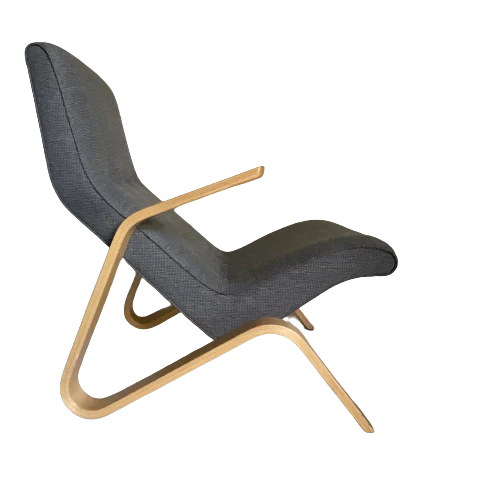

Womb chair replicas can be found. I’m still searching for a Grasshopper replica.
Guests relax at Rose Seidler’s place, 1950s, including a gentleman enjoying the Saarinen ‘womb chair’
And that banquette?
It’s going to be great. A half-moon of joinery with upholstered cushions, forming a low wall between the kitchen and the open space of the dining/sitting room. The low wall will be deep enough to have cupboards in it, and who doesn’t love extra storage? I’m already planning which of the big serving dishes will fit there perfectly.
Inspiration image from a Laminex promotion
Colours? Materials?
The colour scheme is TBD, but I’m leaning toward either earthy tones or bush greens. In any case, I’m a big fan of laminate as a versatile, inexpensive, less-‘morgue’-vibe material than stone. And laminate comes in any colour you can imagine, so bring it on.
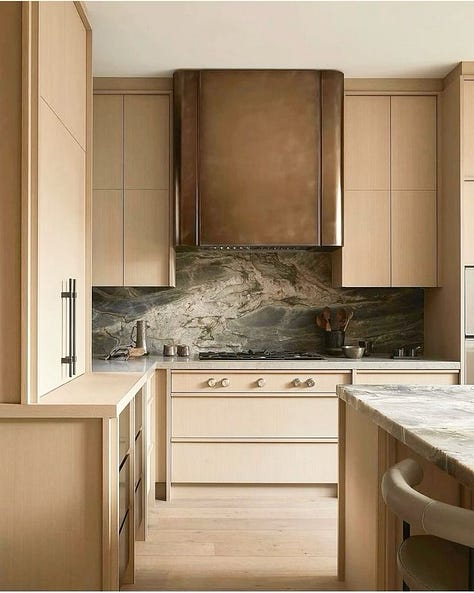
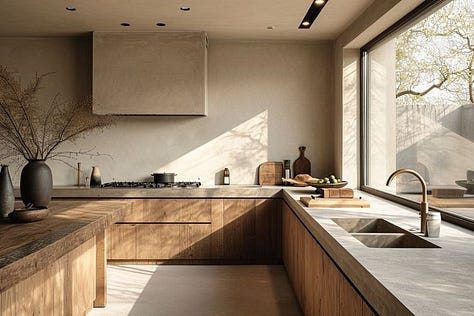
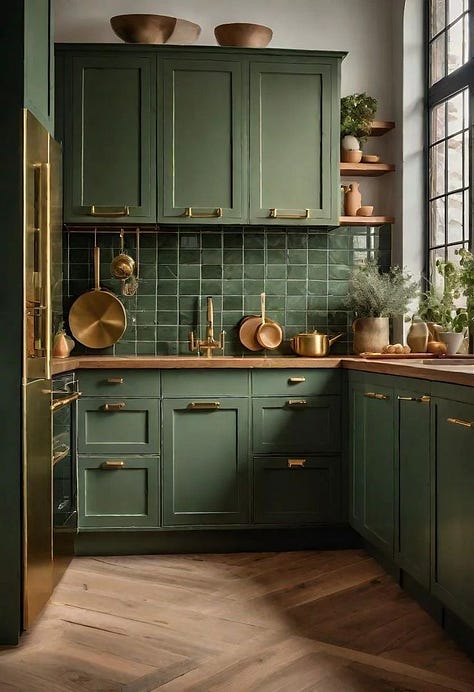
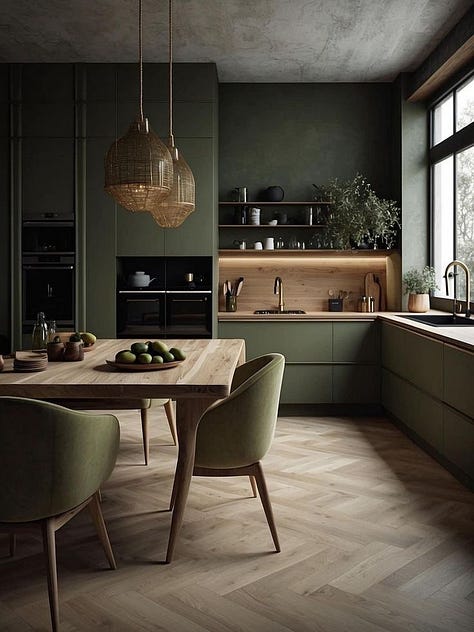





Some fave kitchen inspo pics from Pinterest.
Sourcing replicas
Being an icon of mid-century design, there are plenty of replicas around of the Tulip table and its chairs. Glick Furniture in Alexandria in Sydney carries them. Time for a showroom visit, perhaps:
‘With famous collections from original designers such as Charles Eames, Michael Thonet, Le Corbusier, Eero Saarinen and Hans Wegner, you’ll be sure to find something you love at our mega furniture showroom. We carry a wide selection of designer and replica furniture including lounges, office chairs, dining tables, coffee and side tables, cafe and dining chairs, and much more… Take a look at our extensive range of designer and replica furniture below to see which of our iconic pieces will best complement your current décor.’
Full retro: Image from Pinterest
Morning coffee at the Tulip table
I’ll leave you with an image: first thing in the morning you wander into the kitchen. There’s a big window to the east and morning sun is flooding in from the adjacent courtyard. To your left is the coffee station: a dedicated bench with a Miele coffee machine ready to provide that first java of the day. With the aroma of the fresh-brewed now wafting into the kitchen, you slide into the banquette with a cup before you, ready to scroll a little news. Maybe you’ve turned on the radio. Maybe you’ll have your cereal or yoghurt next. Or perhaps a second cup.
You’ve been able to slide effortlessly into your seat because there is no ‘ugly, confusing, unrestful world’ of chair and table legs below. There is no ‘slum of the legs.’
“I am enthusiastic about the three common principles of architecture: function, structure, and being part of our time.” – Eero Saarinen

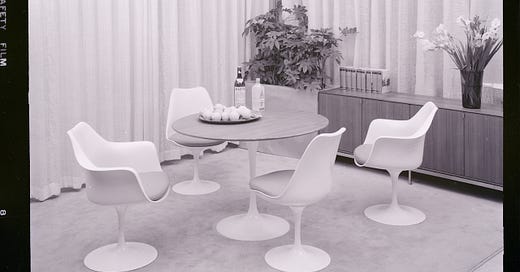






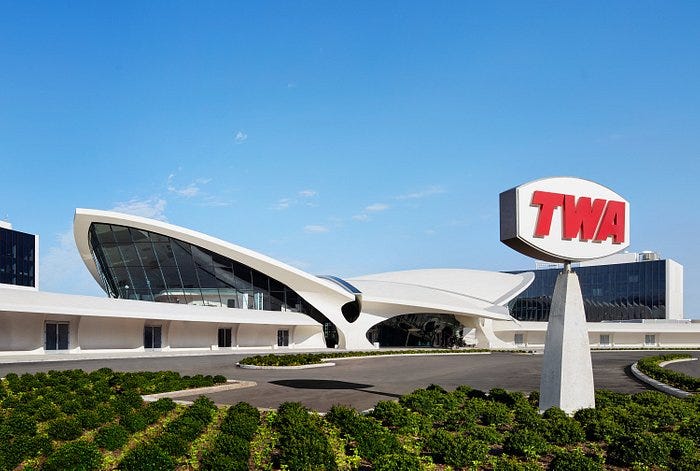
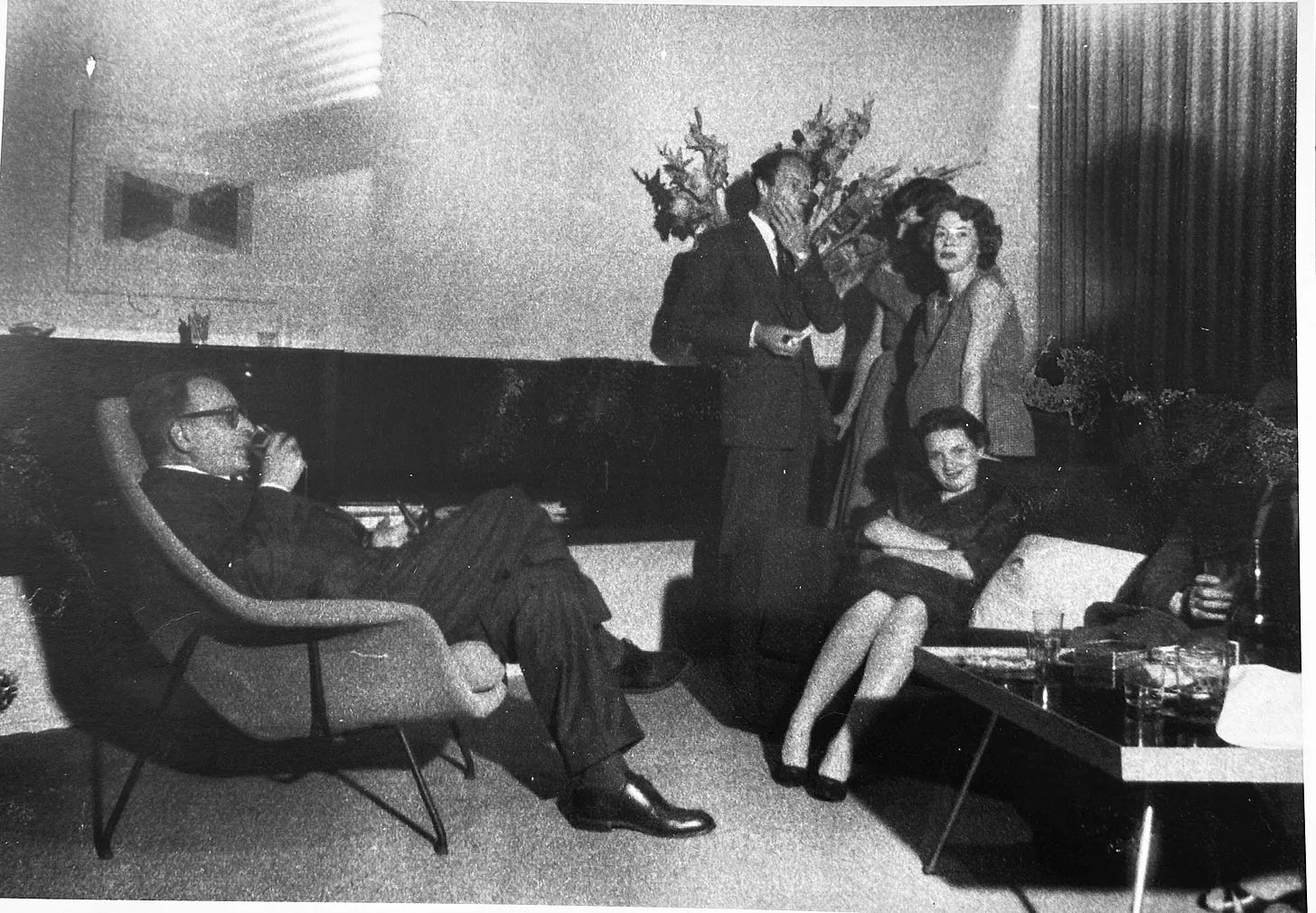
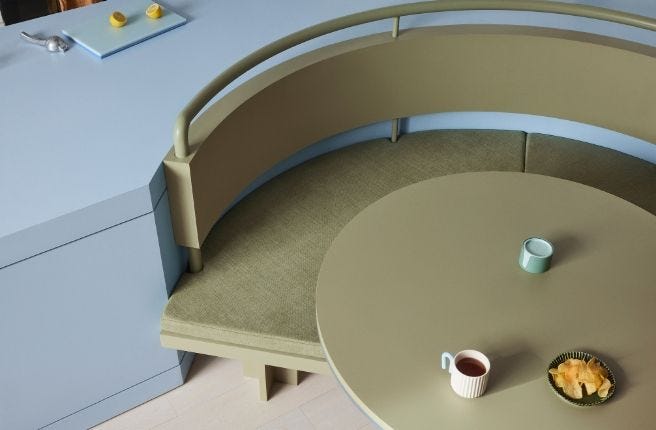
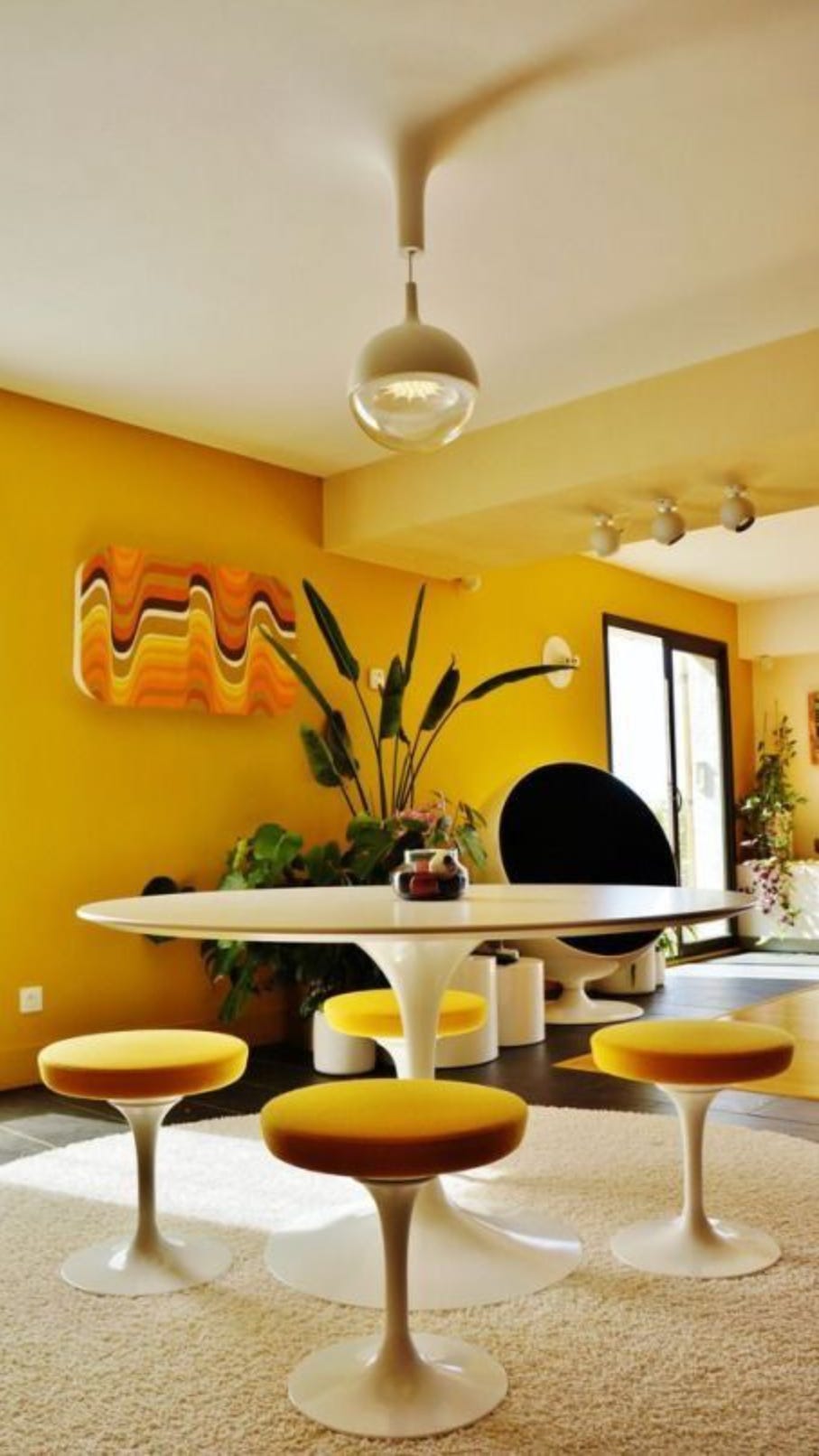
Getting closer! Always enjoy a good designing house read.. will there be pics of the final works? 👏